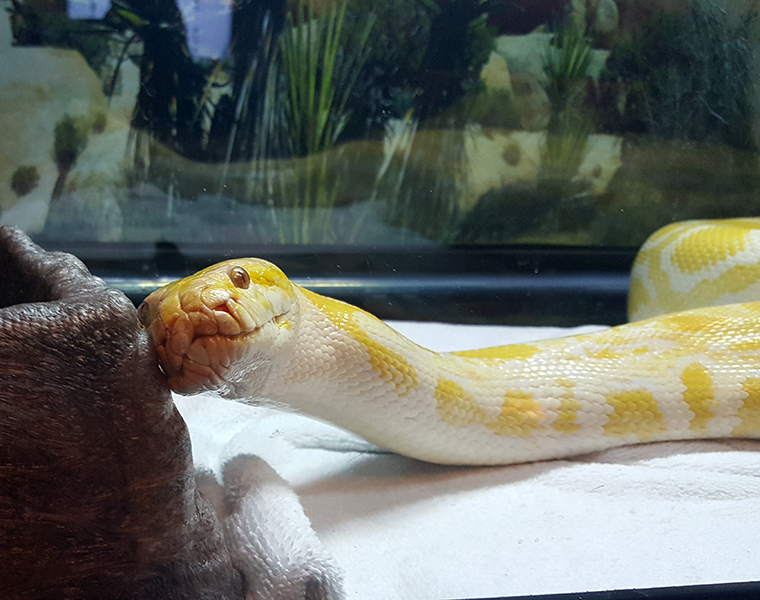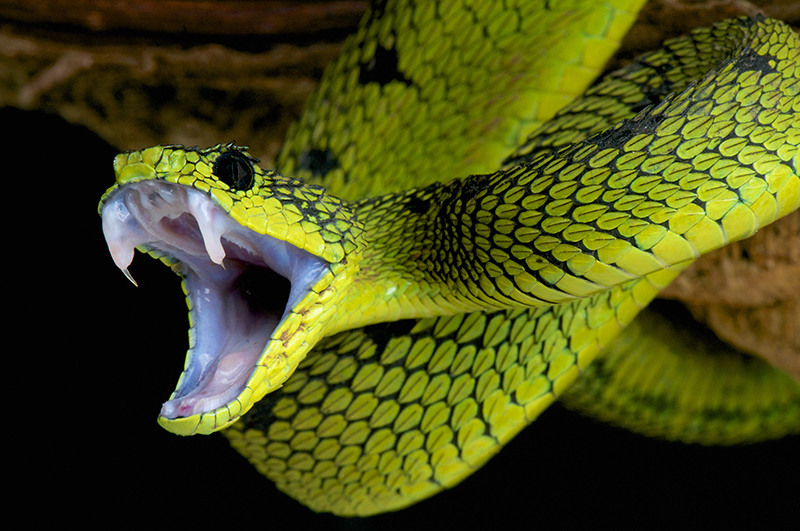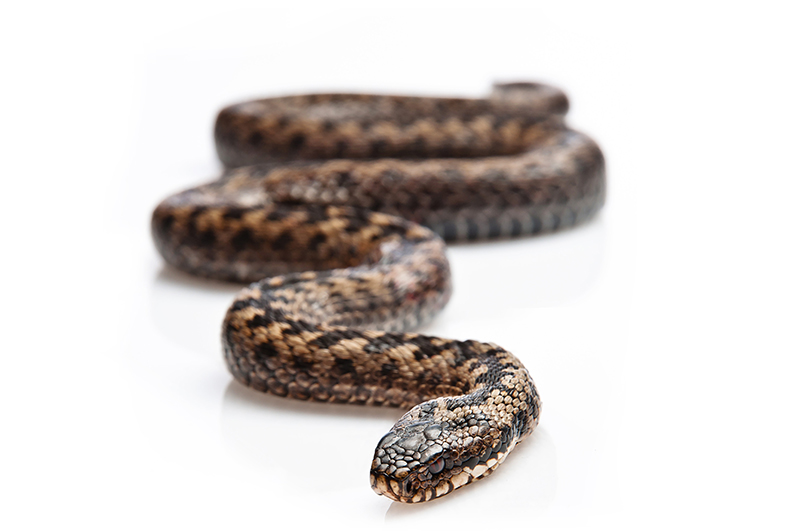You’ve most likely heard of therapy dogs that are often used in hospitals to treat patients. But have you ever heard of therapy snakes? It may surprise you to know that a hospital in London has become the first to use reptiles in treating patients with anxiety and depression disorders. They are finding that corn snakes especially are helping with those patients who have low self-esteem and who may be causing harm to themselves.
What Makes the Corn Snake So Cool
Corn snakes are a popular choice for therapy because of their easygoing nature. They tend to be very laid back, not nervous snakes who can be handled for long periods of time without getting stressed out. They’re not venomous, and they seem to enjoy being touched by handlers. At the Huntercombe Hospital in London, a five-foot, seven-year-old corn snake named Angel is the main event in group sessions where patients can not only touch, but also feed and care for her.
Hugging Burmese Pythons?
Another popular snake not only for shows but for lots of hands on contact is the burmese python. Much larger than the corn snake, the burm can reach lengths of over 10 feet long, they are much slower in movement and can be handled for long periods of time without stress. These guys are great for those who want a snake that will not move too fast, and is large enough to cuddle with!
Iguana Therapy?
Why not? Iguanas are larger reptiles that appear aggressive but can actually be quite tame, some of them really love being pet and just love the attention. They can be fed as well, fruits and greens are their favorite. Our iguana Bruno is a huge puppy who loves human contact.
Why Do Reptiles Provide Comfort?
For those who don’t have reptiles as pets, you might wonder how it is that people can find a snake or iguana so comforting. There are a few things going on here. First, reptiles are unusual. When you’re focused on something that’s different, it takes your mind off your own problems. Second, reptiles in general offer unconditional acceptance, and this is so important for people who struggle with depression, addiction or other mental health issues. Third, handling a reptile gives a patient a sense of accomplishment, and a great story to tell their family and friends. It’s an unusual experience that takes patients out of their problems for a while.
Health care professionals have confirmed the value of reptiles, among other therapy animals, in the recovery process.
And in case you didn’t know, reptile such as a corn snake, or an iguana will recognize the person handling them. So there is also a personal connection, which may be surprising to dog and cat lovers.
What Does the Future Hold for Reptiles as Service Animals?
There is still some controversy surrounding what species should be included in the laws. But there is growing evidence that snakes are especially helpful to people with disabilities, mental illnesses and the elderly.
For example, a man who suffers from a traumatic brain injury due to a motorcycle accident had PTSD, and found that a red tail boa snake helped to calm him down, so he brought it to places where there were many people, and he could handle it better.
Yet skepticism still persists. There was a man at a Burger King who said his five-foot boa constrictor that hung around his neck hugged him to alert him of an oncoming seizure. This type of therapy hasn’t been proven.
However, the sense of unconditional acceptance and feeling of calmness that snakes can provide has been proven, which is why the medical community is beginning to look at reptiles differently as service animals.
If you want to learn more about snakes and other fascinating creatures in the reptile world, you’ll be able to see some popular species up close with New England Reptile Shows. Book a show today.








